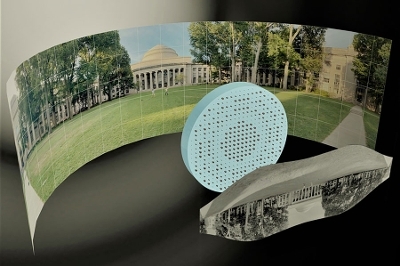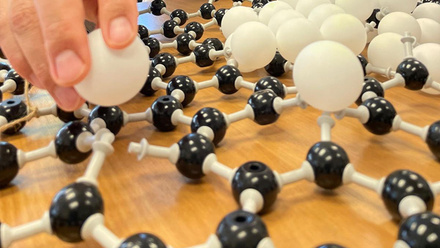Flat fisheye lens captures panoramic pictures
Engineers claim to have developed the first flat fisheye lens that can produce 180° panoramic images.

A meta-lens has been used to transform a piece of glass into a thin, ultra-wide, flat, fisheye lens capable of panoramic and monochromatic flat images.
The team at the Massachusetts Institute of Technology (MIT), USA, says the flat design could be built directly into smartphones and laptops, removing the need for bulky add-ons. The researchers state the simplicity of the design means it does not require additional components and keeps a minimum element count.
‘Traditional fisheye lenses require a number – anywhere between five to 10 or even more – of individual lenses to ensure that optical aberration is minimised, which however increases size, weight, complexity and cost,’ says Juejun Hu, Associate Professor at MIT’s Department of Materials Science and Engineering.
‘We developed a design to transform a flat piece of glass – or other transparent sheets – into a fisheye lens, while attaining exceptional image quality – aka reaching the so-called diffraction limit. This is created based on optical meta-surfaces, which are artificial media comprising a 2D array of sub-wavelength antennas.’
The team has fabricated a meta-lens from a single transparent piece made from calcium fluoride with a thin film of lead telluride deposited on one side. The wafer-thin material has been patterned using lithographic techniques with microscopic features that work together to manipulate light.
The meta-atoms within the structure, shaped into one of several nanoscale geometries such as a rectangular or a bone-shaped configuration to refract the light, are used to produce the panoramic picture. Usually in fisheye lenses, this is formed by the glass’ curvature which creates the distribution of phase delays. Here, the team has established the subsequent pattern of meta-atoms and carved this pattern into the back of the flat glass.
‘We’ve designed the backside structures in such a way that each part can produce a perfect focus,’ explains Hu. An optical aperture on the front is used to allow light in.
‘When light comes in through this aperture, it will refract at the first surface of the glass, and then will get angularly dispersed,’ Hu adds. ‘The light will then hit different parts of the backside, from different and yet continuous angles. As long as you design the backside properly, you can be sure to achieve high-quality imaging across the entire panoramic view.’
The team has designed another meta-lens using amorphous silicon nanoposts for the meta-atoms to test a panoramic simulation. Silicon nanoposts have a high refractive index and low optical losses from the red part of the visible spectrum to the near-infrared (IR) band.
Using test imaging instruments, the team claims that buildings and people in the scene are visible and the resolution is good, regardless of whether they are looking at the centre or the edges.
Hu says the team are currently working to extend the design to other wavelengths (near-IR and visible in particular) and to demonstrate prototype modules for the proposed applications. ‘We will seek to commercialise the technology once we demonstrate working prototypes for these applications.’







